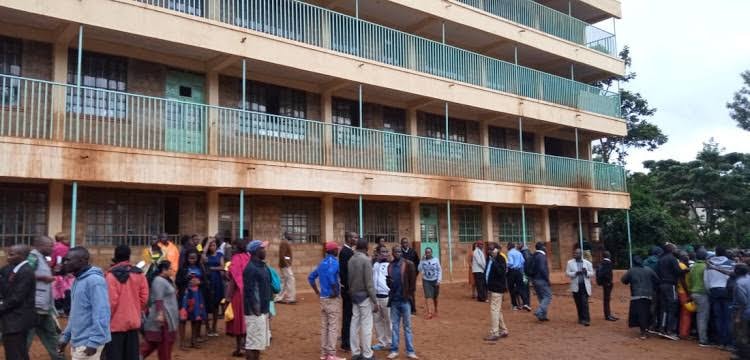Flouting Safety Measures Exposes Students to Danger
Kenya has clear laws on what should be in place in order to start and run a school. These laws have however been flouted hence putting learners at risk. This article seeks explain some of the laws.

On October 9th 2019 RoGGKenya reported about eight students who died and 69 who were injured when a building at Precious Talent Academy collapsed. As usual, Kenyan leaders came out to condemn it and promised to take action. One of the actions taken was to identify schools that have not met the safety requirement and close them.
One such school is St Charles Mutego Education Centre in Nairobi. The private mixed primary and secondary school at Mutuini in Dagoretti, Nairobi County, was ordered shut by Nairobi Regional Director of Education, Jared Obiero. However, the school was reopened in January 2020 because the proprietor Charles Nyamote went to court and the county government was restrained from closing it. However, on February 2nd 2020, a wall collapsed vindicating Mr. Obiero. Luckily, it was over the weekend and so there were no casualties.
The school flouted the following safety measures
- Dormitories have no ventilation.
- Many structures have cracks.
- Dormitory windows have steel grills that cannot be opened from inside in case of an emergency.
Dagoretti Sub-county Security Committee toured the school on February 3rd 2020, a day after the incident and recommended that the school should be closed again. Divisional criminal investigations head Frank Wanjau who is a member of the committee expressed disappointed that the school has an underground water tank that is loosely covered by iron sheet. “This is a disaster awaiting to happen because girls pass here to and from their dormitory.”
In this case, the problem was identified early enough unlike many other cases. This begs the question, is the judiciary a stumbling block to implementation of these safety rules?
A days later, on February 3 rd 2020 Kakamega Primary School hit the media headlines. This time 14 students lost their lives during a stampede. The incident that took place on the third floor of the five-storied building also left 46 injured.37 students were treated and discharged on the same night while nine were admitted. Unfortunately one more student succumbed to injuries days later bringing the number of deaths to 15.
Compensation to families
The national government said it would give Sh 150,000 as compensation to each family of the pupils who died following the stampede at Kakamega Primary School.
This is in addition to Sh140,000 given to each of the bereaved families by the Council of Governors. Speaking at the funeral at Bukhungu Stadium on February 7, Amani National Congress (ANC) leader Musalia Mudavadi told mourners that unscrupulous people use shortcuts to make quick money while endangering innocent lives, saying structural plans and construction standards must be adhered to strictly.
“Before you give a certificate of occupation to buildings in urban areas like schools and other public institutions, caution should be exercised. We have lost 14 lives of future leaders as a result of negligence and selfish interests of an individual who must be held responsible,” said Mudavadi.
Although the money will help the families settle bills and the funeral, both the national and county authorities should have taken responsibility to ensure that the safety regulations are followed.
The government has formed a commission of inquiry to find out what caused the stampede repeat date. It is however clear that the school has not measures adhered to the safety. According to Kennedy Echesa, an education expert, the school was a disaster in waiting.
He listed the following flows:
- 3128 students attend the primary school against a measly 73 teachers.
- There are 51 classrooms in the entire school which means that every classroom may have more than the required maximum of 50 students per class.
- In a week, Echesa explained that only three teachers are on duty, against the huge population of pupils. This means that at some point, one teacher ends up handling a population of over 3,000 kids, single-handedly. This makes it difficult for the teachers to control the huge population. The number of teachers on duty should be more.
Education Cabinet Secretary Prof. George Magoha inspected the scene and announced that the school would remain closed for the week after the February 3rd incident. It was reopened in an event where prayers were held and cleansing done using holy water. Counsellors set up tents at the school and offered psychosocial support to parents and pupils.
What Journalists should do:
- Familiarize yourself with the safety requirements as indicated on our earlier post and identify schools that have not met them.
- Identify schools that have not met the safety measures hence posing a threat to students. Question the authority why they are still operational.
- Identify schools that have met the safety measures and highlight them as good examples.
- Find out the role of the parents when it comes to safety at school. Are they familiar with the safety measures? If they are, then why do they take their children to schools that are not safe?
- Find out the role of the judiciary in implementation of the safety measures. Is it a stumbling block?
By Vitalis Rugie